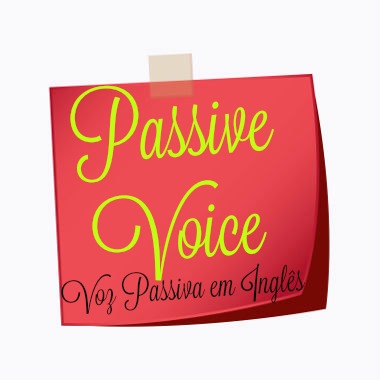We use the Active Voice when we want to be precise, because it makes the conversation easier to understand. The use of the active voice is more common in non-scientific writing. / Usamos a voz ativa quando desejamos ser precisos, pois ela torna a conversa mais clara e compreensível. O uso da voz ativa é mais comum em situações não formais.
Look at the difference between the Active Voice and the Passive Voive. / Veja a diferença entre a Voz ativa e a Voz Passiva.
-
Active: The subject acts.
Ativa: O sujeito é que atua. -
Passive: The subject receive the action.
Passiva: O sujeito recebe a ação.
Examples: / Exemplos:
-
Rachel changed the play title. (active)
Raquel mudou o título da peça. (ativa) -
The play title was changed by Rachel. (passive)
O título da peça foi mudado por Raquel. (passiva) -
She read the hole Bible in one month. (active)
Ela leu toda a Bíblia em um mês. (ativa) -
The hole Bible was read by her in one month. (passive)
A Bíblia toda foi lida por ela em um mês. (passiva) -
I will organize my bedroom every Sunday. (active)
Eu organizarei meu quarto todos os domingos. (ativa) -
My bedroom will be organized by me every Sunday. (passive)
Meu quarto será organizado por mim todos os domingos. (passiva)
Let's see structure of the Active Voice: / Vejamos como é a estrutura da Voz Ativa:
Subject + Verb + Object
Sujeito + Verbo + Objeto
Example: They (Subject) played (Verb) football (Object).
Exemplo: Eles (sujeito) jogaram (verbo) futebol (objeto).
With the Active voice we can make sentences affirmative, interrogative and negative sentences. The writers usually choose the active voice for their work, because it has more fluidity and clarity of the expression. / Com a Voz Ativa, podemos fazer sentenças afirmativas, interrogativas e negativas. Os escritores geralmente escolhem a voz ativa para seus trabalhos porque ela garante maior fluidez e clareza.
*Don't forget!
In an active sentence, the subject is doing the action. / Na sentença com a voz ativa, o sujeito é quem está fazendo a ação.
A very simple example of it is: / Um exemplo bem simples disso é:
-
“I love you”.
-
“I” is the subject, and I'm doing the action: I love you. “You” is the object of the sentence.
Look at more examples of the active voice: / Veja mais exemplos da voz ativa:
This English class was the best class ever.
Essa aula de inglês foi a melhor aula de todos os tempos.
Who ate the last bread?
Quem comeu o último pão?
Nick took a photo of us.
Nick tirou uma foto nossa.
My mother will give you all the information.
Minha mãe lhe dará toda a informação.
The new neighbours are very weird.
Os vizinhos novos são muito estranhos.






